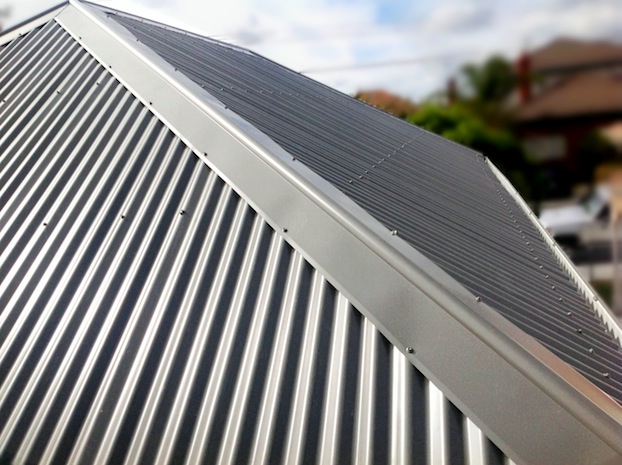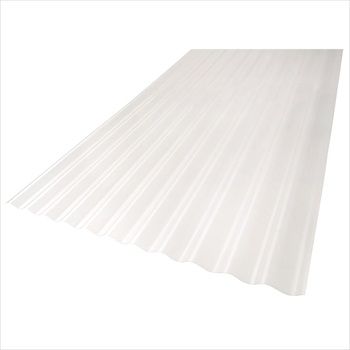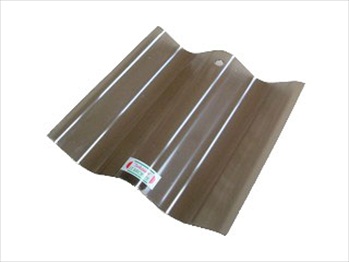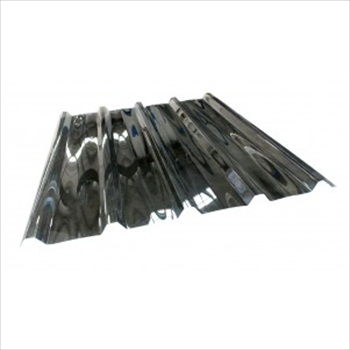Metal Roofing Melbourne
Metal Roofing Melbourne and Colorbond Roofing Melbourne specialists – Check out our Metal Roofing Melbourne video and call us today on 1300 218 889 for a free inspection and quote.
Metal Roofing Melbourne Profiles and Material Types
There is no doubt that steel and metal roofing Melbourne is among the most popular, cost efficient and aesthetically pleasing roofing materials available. Its light weight decreases the cost of building a home and its low mass makes it much more thermally efficient. If installed correctly, there will be virtually no maintenance issues and it will withstand extremely adverse weather conditions. Care is required, however, when choosing both the profile of steel and the material. The material will affect how quickly or slowly your home heats up (there can as much as a 60 degree difference in surface temperature with different finishes) and the profile will determine both the strength of your roof and its ability to disperse water. To help you navigate this info, it is best to check our FAQ page on metal roofs to see if your problem is listed there.

Metal Roofing Melbourne Profiles and Material Types
There are four main types of materials, with a couple of special types, used in more adverse environmental condition:
- Galvanised steel (zinc plated steel). This was the standard steel used up until the late 70s and early 80s. It is rarely used today and recommended only if your house has a strict heritage overlay that requires like for like replacement.
- Zincalume steel (zinc and aluminium plated steel). The new and much improved version of galvanised steel, Zincalume is much more resistant to corrosion. Zincalume has a clean modern look that is much more appealing than its predecessor. It will, however, reach temperatures in excess of 100 degrees Celsius on hot days so, while useful for colder homes with high ceilings, it may not be the best choice when considering the insulating qualities of your home in the summer months.
- Colorbond steel (zinc and aluminium plated steel that has been powder coated for lasting colour finish). Rapidly becoming the most popular roofing material, Colorbond steel has many benefits to recommend it. Its protective powder coating over the zinc, aluminium and steel base makes it one of the most durable roofing products ever developed and with correct installation should last well over 100 years. It is lightweight, so cools down quickly once the direct sunlight is off it keeping your home cooler in the summer months and is less ventilated than a tiled roof so it retains heat generated in the winter months much more effectively.
- Transparent/semi-transparent roofing. These roofing products fall into several different categories and are not made from steel but are used in conjunction with or in place of metal roofs. Poly-carbonate roofing (also known as Laserlight) and fibreglass roofing, are the most common compounds used in the manufacture of transparent roofing and translucent roofing. There are quite a few different profiles, each with there own manufacturer’s specifications on minimum pitch and batten spacing. Because this type of roofing is the most prone to leakage when installed outside of the manufacturer’s specifications, we recommend you let us guide you on both the profile and the compound used.



- Sea Side Grade steel. Used in coastal areas from 100 to 300 metres of breaking surf or in light industrial areas, this steel has all of the benefits of Colorbond but with a more sophisticated coating of zinc and aluminium affording it better protection.
- Stainless Steel Colorbond. This is the top of the range Colorbond and is what is recommended for very close proximity to breaking surf or severe industrial areas. Having a core of chromium, nickel and steel, this high grade material also comes with Colorbond’s protective coatings overlaid on it giving it superior protection against all that the elements can throw against it. This is generally used in commercial applications and is available in bulk quantities only. It is also much more expensive than standard steel.
Once you have ascertained the right material for your roofing project, the next step is the profile or shape of your roof. The shape of steel roofing works in conjunction with the pitch of the roof and the length of the sheets that will be installed. Far from being a aesthetic feature (although that is important to) the profile will determine how effectively your roof disperses water without allowing water ingress into your home.The profile determines the pitch because it dictates how much water can fall onto your roof before the sheets become submerged. If you imagine a square metre of corrugated roofing along side the same size piece of Klip-Lok roofing and then tried to “fill” each piece until the water came up to the top of the respective ridges, you would find that a Klip-Lok roof can hold around three times the capacity of a corrugated roof. Each shape or profile will have a minimum pitch which determines the conditions that it can be installed under. The other major contributor is the sheet length. The longer the rafter length or sheet length, the more water will accumulate. So in some cases the recommended pitch is still not sufficient for the application in question.This is why when we inspect a home, if the pitch is in doubt, we measure it with an electronic pitch gauge so we can correctly recommend the right profile (and gauge) of metal roofing.
Metal Roofing Melbourne profiles we recommend
- Metal Roofing Melbourne: Custom Orb (corrugated). Easily the most popular of roofing profiles, custom orb is the traditional shape that has been popular in Australia for decades. Applying the arch principle in design to get the maximum strength without the necessity of very high gauges, custom orb roofing is both simple and aesthetically pleasing. This is the product we will recommend to all homes that have a fall of over five degrees.


- Metal Roofing Melbourne: Trimdeck. This low pitch roofing product can be used for falls as low as two degrees. It is a screwed or fixed deck roof material. It is good, low cost deck roofing but does not handle foot traffic well. It is best used on roof that will not require traversing. Although adequate with normal length roof sheets it is best to avoid it when dealing with roof rafter lengths over eight meters where the pitch is less than five degrees.


- Metal Roofing Melbourne: Klip-Lok. Manufactured by many different roll formers with many different profile names, this roofing profile is perhaps the penultimate in deck roofing. It is a non-fixed product so instead of screws, it is fixed by locking the steel onto a prefixed batten, eliminating the need for screws. Because it is non-fixed, this product resists warping far better which affords it much more water resistant qualities than other roofing profiles. With the heavier gauge, it can be installed on roofs as low as one degree with a rafter length up to thirty metres. It is more expensive than other profiles but its strength, water resistance and durability more than up for the extra cost. It is designed for deck or flat style roofs.


There are a lot of other profiles and issues that impact on the ideal roofing application. To ensure you have the right profile and material, we encourage you to take advantage of our free onsite inspection service. Our highly qualified supervisors will competently assess your roof and recommend the best solution for your situation.
Metal Roofing Melbourne
We are available 7 days a week for an on-site inspection and our quotations are free of cost and without obligation. If you would like to talk to an expert about Metal Roofing Melbourne, get in touch with us via contact form, or call us on 1300 218 889.









